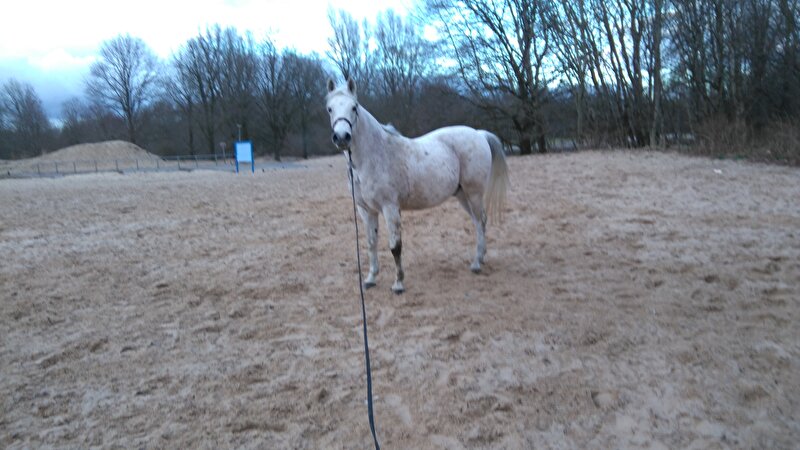Marloez schreef:Fenrir schreef:Dit klopt niet. Ze hebben toevallig het schilderij met de schimmelversie gepakt maar er zijn dus ook versies met compleet andere paarden. Daarnaast heeft Napoleon dat schilderij niet laten maken, het is gemaakt in opdracht van de Spaanse koning als cadeau voor Napoleon. Het schilderij heeft dus niks met Marengo te maken.
Er staat in de tekst dat Marengo één van zijn 52 paarden was maar omdat er in de archieven van Napoleons stallen niets over te vinden valt twijfelt men er over. Er staat niet als een feit maar dat er wordt aangenomen dat hij dit schilderij heeft laten maken. Het schilderij stelt de oversteek voor van de Grote Sint-Bernhardplas maar deze heeft hij in werkelijkheid op de rug van een ezel doorgebracht. Napoleon had een hofschilder; Jacques-Louis David en hij heeft dit schilderij gemaakt.
Zie link die ik eerder postte over de schilderijen:
Citaat:
The installation of Napoleon as First Consul and the French victory in Italy allowed for a rapprochement with Charles IV of Spain. While talks were underway to re-establish diplomatic relations, a traditional exchange of gifts took place. Charles received Versailles-manufactured pistols, dresses from the best Parisian dressmakers, jewels for the queen, and a fine set of armour for the newly reappointed Prime Minister, Manuel Godoy. In return Napoleon was offered sixteen Spanish horses from the royal stables, portraits of the king and queen by Goya, and the portrait that was to be commissioned from David. The French ambassador to Spain, Charles-Jean-Marie Alquier, requested the original painting from David on Charles' behalf. The portrait was to hang in the Royal Palace of Madrid as a token of the new relationship between the two countries. David, who had been an ardent supporter of the Revolution but had transferred his fervour to the new Consulate, was eager to undertake the commission.
Citaat:
The commission specified a portrait of Napoleon standing in the uniform of the First Consul, probably in the spirit of the portraits that were later produced by Antoine-Jean Gros, Robert Lefèvre (Napoleon in his coronation robes) and Jean Auguste Dominique Ingres (Napoleon I on his Imperial Throne), but David was keen to paint an equestrian scene. The Spanish ambassador, Ignacio Muzquiz, informed Napoleon and asked him how he would like to be represented. Napoleon initially requested to be shown reviewing the troops but eventually decided on a scene showing him crossing the Alps.
Er zijn er uiteindelijk wel meer gemaakt, omdat Napoleon dat wilde, maar de eerste versie heeft een bont paard (je zou toch denken dat als zijn schimmel zo favoriet was hij die als eerste liet schilderen).
Maar wie weet had hij gewoon meerdere favoriete paarden en zijn die allemaal geschilderd  Over Marengo is verder iig weinig te vinden.
Over Marengo is verder iig weinig te vinden.

 Zie
Zie 
 En dan dingen mooier worden afgeschilderd dan ze zijn snap ik wel maar ook het opgezette paard ziet er nog steeds vrij chique uit.
En dan dingen mooier worden afgeschilderd dan ze zijn snap ik wel maar ook het opgezette paard ziet er nog steeds vrij chique uit. 
 een bolle toet
een bolle toet 



